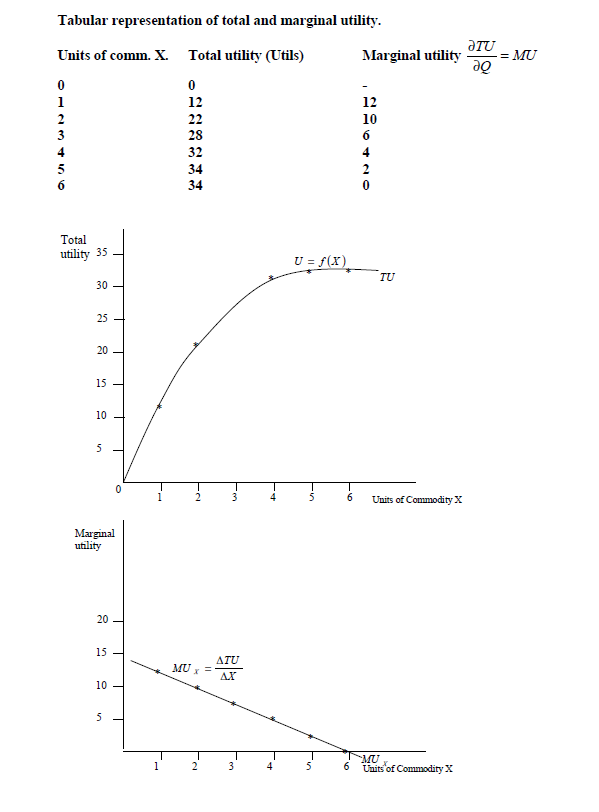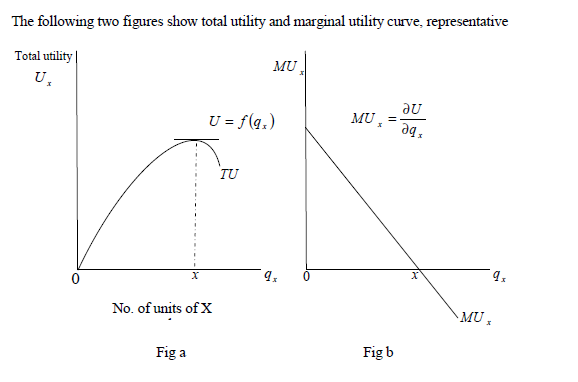The cardianalist argue that utility can be measured. Some economists have suggested that where perfect knowledge of market condition and income level exist, utility can be measured in monetary units, by the amount of money the consumer is willing to pay
(sacrifice) for another unit of a commodity. Others suggested the measurement of utility in subjective units called utils. (Subjective – depending on personal judgment/ imagination)
- The cardinal utility theory
Cardinal approach could also be referred to as utility approach.
-Concept of utility
Utility can be defined as satisfaction a consumer gets from consuming various goods and services. Utility here is assumed to be quantifiable (measurable) It is very important to distinguish between total utility and marginal utility.

Marginal utility: - is the change in total utility resulting from a unit change in quantity of a given commodity consumed.
Under normal circumstances marginal utility fall as more additional units are consumed.


To be able to draw the two diagrams we have assumed that total utility is derived from commodity x.
From fig. (a), total utility increased but at a decreasing rate, up to a quantity x, and then start decline.
From fig. (b), the marginal utility of commodity x may be depicted by a line with a negative slope. Marginal utility of x declines continuously and become zero at quantity x, and become negative beyond quantity x.
This leads us to the law of diminishing marginal utility which states that, as more quantities are consumed of a particular good, satisfaction derived from additional units goes on falling.
Wilfykil answered the question on
March 6, 2019 at 09:04